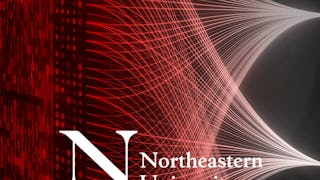This course provides an overview of some different Natural Language Processing (NLP) techniques, their underlying principles, and their applications in engineering. The focus will be on the practical implementation of NLP methods such as word embeddings, neural networks, attention mechanisms, and advanced deep learning models to solve real-world engineering problems.


您将获得的技能
要了解的详细信息

添加到您的领英档案
9 项作业
了解顶级公司的员工如何掌握热门技能

该课程共有4个模块
This module provides an in-depth exploration of Natural Language Processing (NLP), a crucial area of artificial intelligence that enables computers to understand, interpret, and generate human language. By combining computational linguistics with machine learning, NLP is applied in various technologies, from chatbots and sentiment analysis to machine translation and speech recognition. The module introduces fundamental NLP tasks such as text classification, Named Entity Recognition (NER), and neural machine translation, showcasing how these applications shape real-world interactions with AI. Additionally, it highlights the complexities of teaching language to machines, including handling ambiguity, grammar, and cultural nuances. Through the course, you will gain hands-on experience and knowledge about key techniques like word representation and distributional semantics, preparing them to solve language-related challenges in modern AI systems.
涵盖的内容
2个视频17篇阅读材料2个作业1个应用程序项目2个讨论话题
This module focuses on optimization techniques critical for machine learning, particularly in natural language processing (NLP) tasks. It introduces Gradient Descent (GD), a fundamental algorithm used to minimize cost functions by iteratively adjusting model parameters. You’ll explore variants like Stochastic Gradient Descent (SGD) and Mini-Batch Gradient Descent to learn more about their efficiency in handling large datasets. Advanced methods such as Momentum and Adam are covered to give you insight on how to enhance convergence speed by smoothing updates and adapting learning rates. The module also covers second-order techniques like Newton’s Method and Quasi-Newton methods (e.g., BFGS), which leverage curvature information for more direct optimization, although they come with higher computational costs. Overall, this module emphasizes balancing efficiency, accuracy, and computational feasibility in optimizing machine learning models.
涵盖的内容
2个视频15篇阅读材料2个作业1个讨论话题
This module explores Named Entity Recognition (NER), a core task in Natural Language Processing (NLP) that identifies and classifies entities like people, locations, and organizations in text. We’ll begin by examining how logistic regression can be used to model NER as a binary classification problem, though this approach faces limitations with complexity and context capture. We’ll then transition to more advanced techniques, such as neural networks, which excel at handling the complex patterns and large-scale data that traditional models struggle with. Neural networks' ability to learn hierarchical features makes them ideal for NER tasks, as they can capture contextual information more effectively than simpler models. Throughout the module, we compare these methods and highlight how deep learning approaches such as Recurrent Neural Networks (RNNs) and transformers like BERT improve NER accuracy and scalability.
涵盖的内容
1个视频12篇阅读材料2个作业1个应用程序项目1个讨论话题
The Word2Vec and GloVe models are popular word embedding techniques in Natural Language Processing (NLP), each offering unique advantages. Word2Vec, developed by Google, operates via two key models: Continuous Bag of Words (CBOW) and Skip-gram, focusing on predicting a word based on its context or vice versa (Word2Vec). The GloVe model, on the other hand, created by Stanford, combines count-based and predictive approaches by leveraging word co-occurrence matrices to learn word vectors (GloVe). Both models represent words in a high-dimensional vector space and capture semantic relationships. Word2Vec focuses on local contexts, learning efficiently from large datasets, while GloVe emphasizes global word co-occurrence patterns across the entire corpus, revealing deeper word associations. These embeddings enable tasks like analogy-solving, semantic similarity, and other linguistic computations, making them central to modern NLP applications.
涵盖的内容
3个视频26篇阅读材料3个作业1个应用程序项目1个讨论话题
位教师

从 Machine Learning 浏览更多内容
 状态:预览
状态:预览Northeastern University
 状态:预览
状态:预览Northeastern University
 状态:免费试用
状态:免费试用L&T EduTech
人们为什么选择 Coursera 来帮助自己实现职业发展




常见问题
To access the course materials, assignments and to earn a Certificate, you will need to purchase the Certificate experience when you enroll in a course. You can try a Free Trial instead, or apply for Financial Aid. The course may offer 'Full Course, No Certificate' instead. This option lets you see all course materials, submit required assessments, and get a final grade. This also means that you will not be able to purchase a Certificate experience.
When you purchase a Certificate you get access to all course materials, including graded assignments. Upon completing the course, your electronic Certificate will be added to your Accomplishments page - from there, you can print your Certificate or add it to your LinkedIn profile.
Yes. In select learning programs, you can apply for financial aid or a scholarship if you can’t afford the enrollment fee. If fin aid or scholarship is available for your learning program selection, you’ll find a link to apply on the description page.
更多问题
提供助学金,




